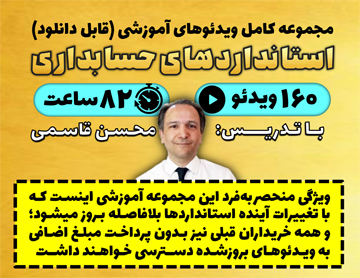ابزار مالی قراردادی است كه برای یك واحد تجاری، دارایی مالی و برای واحد تجاری دیگر، بدهی مالی یا ابزار مالكانه ایجاد میكند. (استاندارد حسابداری 36 ابزارهای مالی - ارائه (مصوب 1397))
در این استاندارد اصطلاحات، قرارداد و قراردادی، به توافق بین دو یا چند طرف با پیامدهای اقتصادی مشخص اشاره دارد كه طرفین اختیار محدودی، در صورت وجود، برای عدول از آن قرارداد دارند، زیرا معمولاً این توافق، ضمانت اجرایی قانونی دارد. قراردادها، و در نتیجه ابزارهای مالی، ممكن است شكلهای متنوعی داشته باشند و لزوماً مكتوب نباشند.
در این استاندارد، اصطلاح واحد تجاری شامل اشخاص حقیقی، مشارکتها و اشخاص حقوقی است. (همان منبع)
ابزارهای مالی، شامل ابزارهای اولیه (مانند دریافتنیها، پرداختنیها و ابزارهای مالكانه) و ابزارهای مالی مشتقه (مانند اختیارهای معامله مالی، قراردادهای آتی و پیمانهای آتی، سواپ نرخ سود تسهیلات و سواپ ارز) است.
A financial instrument is any contract that gives rise to a financial asset of one entity and a financial liability or equity instrument of another entity - IAS 32 Financial Instruments: Presentation
In this Standard, ‘contract’ and ‘contractual’ refer to an agreement between two or more parties that has clear economic consequences that the parties have little, if any, discretion to avoid, usually because the agreement is enforceable by law. Contracts, and thus financial instruments, may take a variety of forms and need not be in writing.
In this Standard, ‘entity’ includes individuals, partnerships, incorporated bodies, trusts and government agencies.
AG15.Financial instruments include primary instruments (such as receivables, payables and equity instruments) and derivative financial instruments (such as financial options, futures and forwards, interest rate swaps and currency swaps). Derivative financial instruments meet the definition of a financial instrument and, accordingly, are within the scope of this Standard.





دیدگاه خود را بنویسید